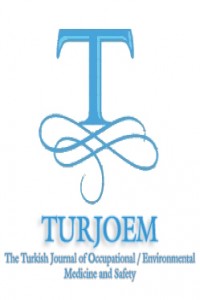Öz
The regulations
relating to olive oil are covered by "Olive Oil and Pomace Oil
Communique" in the “Turkish Food Codex” in Turkey and monitored by the
Ministry of Food, Agriculture and Livestock. According to this communique, the
mixing of olive oil with other oils (adulteration) is forbidden. Today, the
liter price of extra virgin olive oil in Turkey has increased to about 20-25
TL. Thus, the people tend to buy the unbranded and cheap oils sold uncontrolled
in the streets and bazaars. The possibility of adulteration of these oils is
very high.
The aim of this
study was investigating of the unbranded olive oils in terms of adulteration
and comparing with some of olive oils of the best known trademarks. The fatty
acid composition (it was analyzed by GC-MS), refractive index and free fatty acidity
expressed oleic acid (wt%) were determined in 40 samples (7 of them are
trademarks).
The fatty acid
composition of 10 of 33 olive oils sold uncontrolled, were different from the
fatty acid composition of olive oil. Furthermore, their linoleic acid amounts
were found to 2-3 fold higher than olive oil’s. It showed that these oils mixed
with other vegetable oils contained high amounts of linoleic acid. The
refractive index values at 20 °C (nD20) and free faty acidities of the samples
that in accordance with the specifications "Extra virgin olive oil”, were
between 1.4672 to 1.4691 and 0.28% to 3.64%, respectively, these values for the
inappropriate samples were between 1.4710 to 1.4738 and 0.09% to 0.67%,
respectively. According to Communique, the crude oils were defined as the
inappropriate oils for direct consumption, and the free faty acidity values of
them more than 2%. The values of free faty acidity of 9 of 33 samples sold
uncontrolled, were founded more than 2%, in accordance with crude oils. All of
the analysis results of trademarks were found appropriate for the
specifications of "extra virgin olive oil".
Anahtar Kelimeler
DETERMINATION OF THE ADULTERATION IN OLIVE OILS WHICH SOLD UNCONTROLLED
Kaynakça
- Nesrin IÇLI, Gülçin Ö. ÇANTAY, Sezen ÇETINER, Zeliha KAYAALTI
- Kastamonu University Fazıl Boyner Faculty of Health Sciences, Kastamonu, Turkey Ministry of Customs and Trade, Ankara Laboratory Directorate, Ankara, Turkey Ankara University, Institute of Forensic Sciences, Cebeci, Ankara
Öz
Kaynakça
- Nesrin IÇLI, Gülçin Ö. ÇANTAY, Sezen ÇETINER, Zeliha KAYAALTI
- Kastamonu University Fazıl Boyner Faculty of Health Sciences, Kastamonu, Turkey Ministry of Customs and Trade, Ankara Laboratory Directorate, Ankara, Turkey Ankara University, Institute of Forensic Sciences, Cebeci, Ankara
Ayrıntılar
| Bölüm | Articles |
|---|---|
| Yazarlar | |
| Yayımlanma Tarihi | 16 Şubat 2017 |
| Yayımlandığı Sayı | Yıl 2017 Cilt: Volume 2 Sayı: İssue 1 (1) - 2.İnternational Congress Of Forensic Toxicology |


